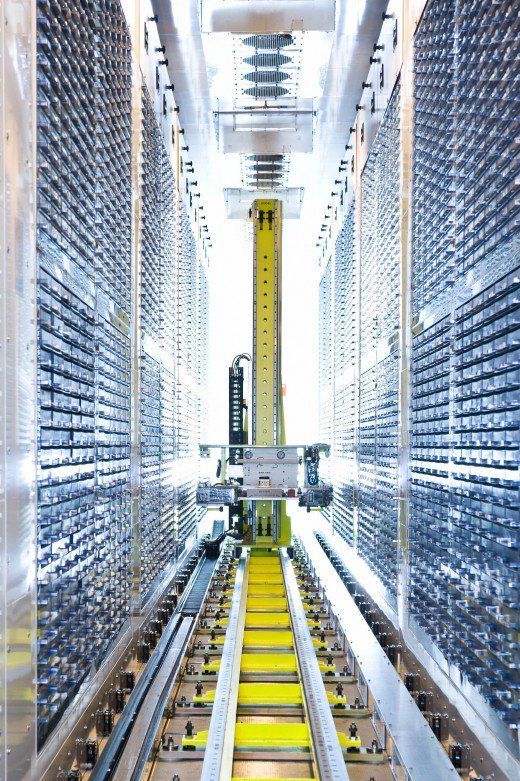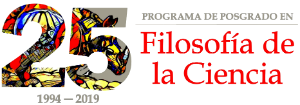

Contributor:
Cite as:
Rodríguez, Maria Amelia. 2019. "Biobanks interrupted: the ethnographic reconfiguration of biobanks images." In "Methodological Interruptions Across the Field and Archive: Doing STS in Mexico" created by Arturo Vallejo. In Innovating STS Digital Exhibit, curated by Aalok Khandekar and Kim Fortun. Society for Social Studies of Science. August.
When I was planning my research project, before I did field work, I pictured biobanks as modern structures using sophisticated technology: a collection of samples stored in modern freezers with robots sorting out perfectly labeled tubes in racks and shelves. This image was interrupted by my daily ethnographic observations.
The intention of this collection of objects is to show how our ethnographic observations can act as interruptions that reconfigure the image of our object of study. The modern, sophisticated and neat image of biobanks was reconfigured into one that included, among other things, the human organs that serve as the source of supply for biobanks. In the case of INCan, those organs come from patients that attend the hospital every day. The context and reality of daily life in a big city such as Mexico City also challenge the conception of a patient. Who is a patient for such a hospital? A person beaten and left bleeding in the street across the hospital is a patient? Not according to my observations.
My aim was to gain a deep understanding of how biobanks work. I wanted to know about the daily routines of the people who work in the Incan tumor bank. The method I used was a participant observation ethnography. For almost two years, I followed each of the members of the staff of the tumor bank through their daily work routines. Some days I had to wake up at 4 am to get to the tumor bank at the same time as the nurses who worked there. Other days I had stay in the bank until 11 pm, when the afternoon shift ended.
This type of approach had a huge impact on me. It reconfigured the previous image I had of biobanks. The daily observations and the interaction with the staff of the tumor bank materialized the specific forms and configuration of the work being carried out in the Incan tumor bank. Almost every day there were experiences that interrupted and reconfigured my daily observations. These interruptions included the members of a family who cried and hugged each other by the front door of the hospital; a dying man in a stretcher waiting to be admitted to the hospital, a patient-prisoner in cuffs, a giant tumor ovary on a clean fume hood and the penetrating smell of burning flesh in the operating room. All of these scenes and experiences are part of working in the tumor bank of INcan.
My ethnographic approach allowed me to work together with the tumor bank staff. We had group discussions about STS, about my PHD work and even about some or the findings of my observations. Since then, they invite every year to give a talk about STS in their annual course about biobanks.
Beltrame, L., & Hauskeller, C. 2016. “Assets, Commodities and Biosocialities”. In Tecnoscienza, 9(2): 5-31.
Bourdieu, P. 1994. “El campo científico”. In Redes: revista de estudios sociales de la ciencia: 129-160.
Bourdieu, P. 2001. El oficio de Científico. Barcelona: Anagrama.
Emerson, R., Fretz, R. I., & Shaw, L. L. 2011. Writing Ethnographic Fieldnotes (Second ed.). Chicago: University of Chicago Press.
INCAN. n.d. http://www.incan.salud.gob.mx/. Obtenido de http://www.incan.salud.gob.mx/
Latour, B., & Woolgar, S. 1979. Laboratory Life. United States of America: Sage Publications.
Mitchell, R., & Waldby, C. 2010. “National Biobanks: Clinical labor, Risk Production and the cration of biovalue.” In Science, Technology & Human Values: 330-355.
Neresini, F. 2011. “Social aspects of biobanking: Beyond the Public/Private distinction and inside the relationship between the body and identity”. In C. Lenk, Biobanks and Tissue Research. The Public, the Patient and the Regulation. Springer: 65-78.
Ruíz-Godoy, L., Meneses García, A., Suárez-Roa, L., & Enriquez, V. 2009. Organization of a Tumor Bank: The experience of the National Cancer Institute of México. Pathobiology, 77: 147–154.
Sunder Rajan, K. 2006. Biocapital: The Constitution of Postgenomic Life. United States of America: Duke University Press.
Titmuss, R. 1970. The Gift Relationship. United States: The New Press.
Waldby, C., & Mitchel, R. 2006. Tissue Economies. Durham and London: Duke University.
All Innovating STS exhibits are oriented by nine shared questions in order to generate comparative insight. These are:
ARTICULATION: What STS innovations (of theory, methodology, pedagogy...Read more
Furthering its theme, Innovations, Interruptions, Regenerations , the 2019 annual 4S meeting in New Orleans will include a special exhibit, Innovating STS , that showcases innovations ...Read more
The second vignette speaks of a wounded man who spent around 7 hours lying on the sidewalk a few meters from the entrance to the hospital, without medical attention, while a large number of doctors passed around him to buy food from street vendors.Read more
This ethnographic vignette illustrates a moment that I experienced as an interruption during my ethnographic work. It depicts a common scene observed in the reception hall of the hospital. A family is crying; they hug and comfort each other. It’s not clear if a relative died or if they were told...Read more